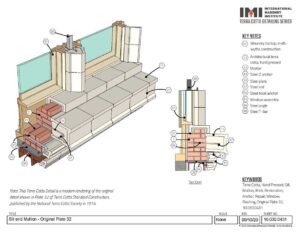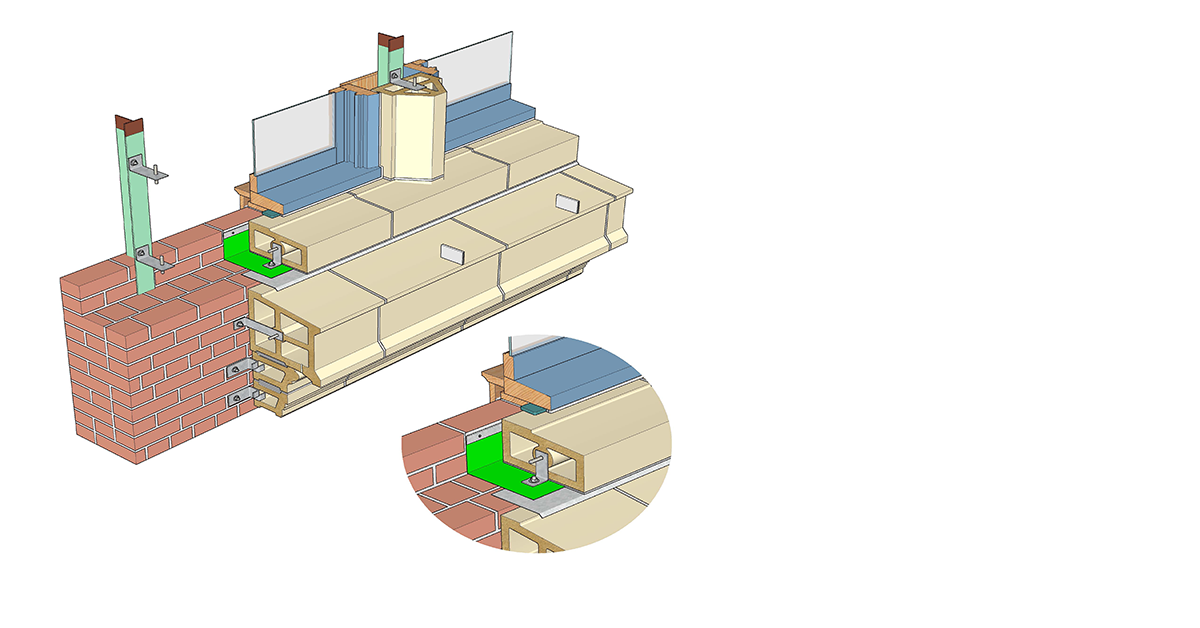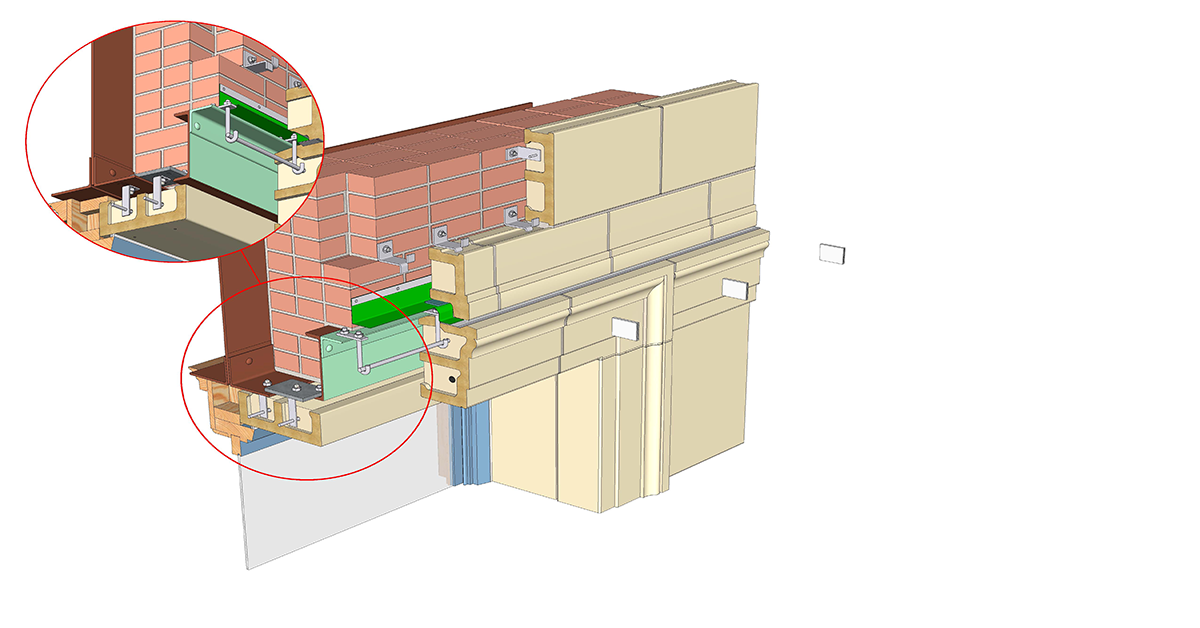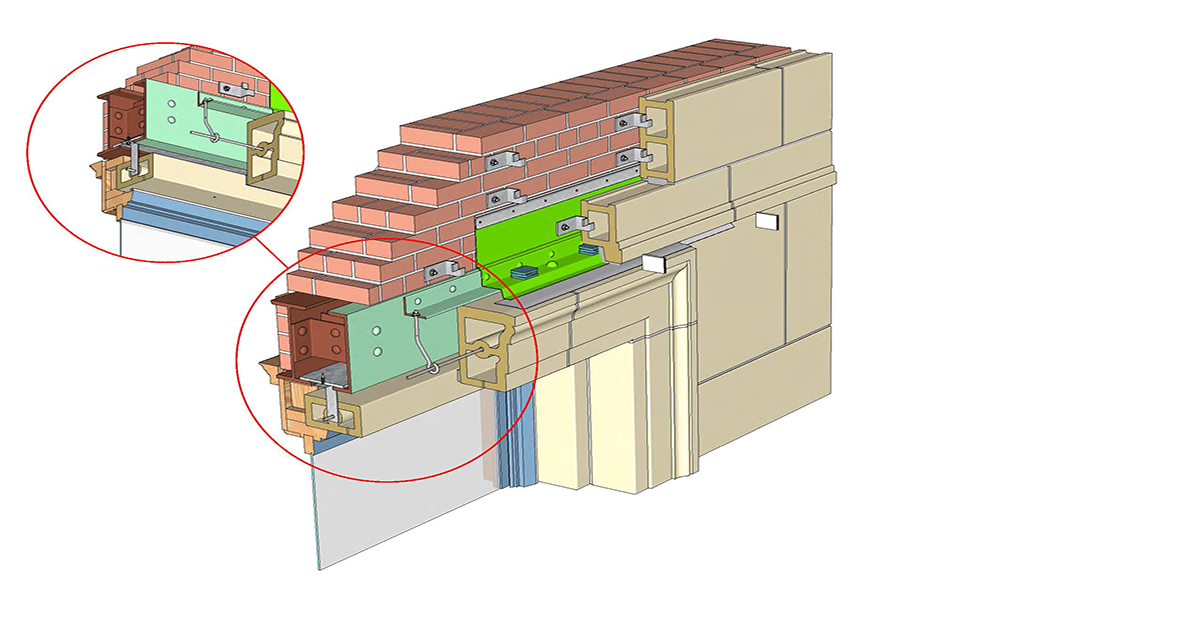- Detail
- 3D Model




Double click to activate the 3d render.
This detail illustrates a modern rebuild strategy for replacing existing architectural terra cotta (TC) sill, mullion, and accessory units around window openings. The existing TC is replaced with new extruded TC units, installed not filled, with weep holes at the underside of each overhanging unit; each secured with new stainless-steel anchorage. In restoring and rebuilding these historic wall systems, moisture mitigation is critical to their long-term preservation and performance. Moisture management measures in this detail include horizontal skyward-facing joint treatment of sealant or lead T-caps and an integrated flashing system beneath the sill. The flashing system consists of a self-adhering flashing with ends dams secured by a termination bar with continuous sealant, a stainless-steel drip edge, and weeps in the vertical joints. The existing structural steel supports are also protected by cleaning and coating with a corrosion-inhibiting coating.
We’ve also included a modern rendering of an original detail in Plate 32 of Terra Cotta Standard Construction, published by the National Terra Cotta Society in 1914. It provides a general example of appropriate architectural terra cotta design and detailing at the time of publication. Specifically, this detail illustrates an example of an architectural terra cotta sill, mullion, and accessory units around window openings. The units are anchored to a transitional wall system, consisting of a multi-wythe masonry backup wall with structural steel support. The architectural terra cotta is hand-pressed and attached with steel anchorage. Though the details in Terra Cotta Standard Construction were intended to illustrate general best practices of terra cotta construction, specific project construction and conditions vary.



